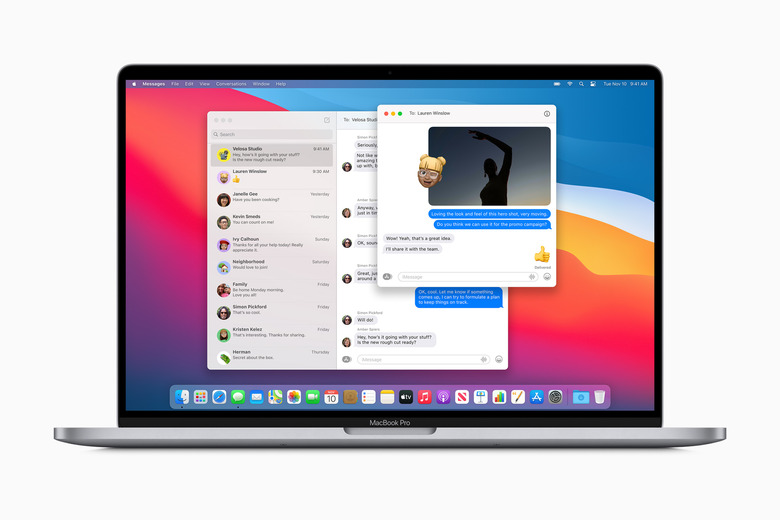Internal Emails Reveal The Exact Reason Apple Won't Bring iMessage To Android
When Apple launched iMessage on iPhone a few years ago, it set a new standard for instant messaging experiences on smartphones, effectively killing SMS texting in the process. iMessage replaced traditional texts with richer messages when chats occurred via an internet connection (blue bubbles), reverting to conventional SMS (green bubbles) when an internet connection wasn't available. The app also came with end-to-end encryption, protecting the contents of chats from prying eyes. Encryption also became a standard feature for chat apps.
Apple kept upgrading the iMessage experience over the years, adding new features and support for multiple devices. The app works on all Apple's products, allowing users to move between iPhone, iPad, and Mac seamlessly. But Apple never made an iMessage app for Android, and other third-party attempts failed to bring this highly coveted texting app to Android. It turns out that Apple actually had an excellent reason to port iMessage to Android, even though it ultimately chose not to do it.
The blue bubble-green bubble disconnect remains to this day. However, plenty of chat apps bridge the two ecosystems, offering the same iMessage-like features on both iPhone and Android. The list includes WhatsApp, Signal, and Telegram, with the first two also featuring end-to-end encryption by default. Google moved between various iMessage alternatives of its own before finally sticking with RCS on Android.
It's Google the reason why Apple execs debated whether to make an iMessage app for Android or not. That's according to new evidence unearthed in the Epic vs. Apple legal case.
Depositions that Epic made public a few weeks ago explained why there's no iMessage app for Android. Epic showed statements from various Apple execs, including Eddy Cue, Craig Federighi, and Phil Schiller, that revealed Apple could have made an Android version of the app back in 2013. Apple decided that having iMessage on Android would be against its interests. That's a point that Epic tries to make in its antitrust case against Apple; that the company devises its products to lock in customers to its platforms.
New depositions from the case show that Cue wanted iMessage on Android back in 2013 to prevent Google from developing or acquiring a similar app for Android. At the time, Google was ready to pay $1 billion for WhatsApp. It was ultimately Facebook that bought the cross-platform chat app for nearly $20 billion, an investment that shows how critical this type of smartphone functionality is. WhatsApp is currently the world's most popular chat app, with more than 2 billion users.
An email exchange between Cue and Federighi highlights the main points in Apple's internal debates on iMessage for Android (via The Verge):
Cue: We really need to bring iMessage to Android. I have had a couple of people investigating this but we should go full speed and make this an official project.... Do we want to lose one of the most important apps in a mobile environment to Google? They have search, mail, free video, and growing quickly in browsers. We have the best messaging app and we should make it the industry standard. I don't know what ways we can monetize it but it doesn't cost us a lot to run.
Federighi: Do you have any thoughts on how we would make switching to iMessage (from WhatsApp) compelling to masses of Android users who don't have a bunch of iOS friends? iMessage is a nice app/service, but to get users to switch social networks we'd need more than a marginally better app. (This is why Google is willing to pay $1 billion — for the network, not for the app.)...In the absence of a strategy to become the primary messaging service for [the] bulk of cell phone users, I am concerned [that] iMessage on Android would simply serve to remove an obstacle to iPhone families giving their kids Android phones.
The deposition also shows that Cue thinks the lack of iMessage on Android did not become an obstacle to families giving their kids Android phones. That said, at least we now know Apple's exact line of thought in deciding not to offer its popular messaging service on Android devices.
The full document is available at this link, with the discussion about iMessage for Android starting on page 54.
